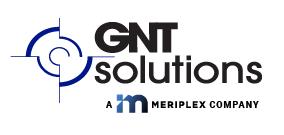In the digital age, cybersecurity should be one of the top priorities for anyone who goes online. One way is to vet those who are trying to access your systems. But when it comes to verifying users’ identity, many are unaware of the two kinds of authentication measures available.
Warning signs your computer has malware
With the rise of eCommerce and online banking, cybercrime has evolved. Like criminals who pull smash-and-grab jobs, they go where the money is. However, unlike bank robbers, cybercriminals do their best to avoid detection by letting malware do the work for them.
Monitoring employees online: Is it right?
The choice to monitor your employees’ computers or not is a tricky one. While part of you may think it’s unethical, it could end up saving you hours of lost productivity or preventing a data breach. Here are some pros and cons of employee monitoring, and some tips to handle it fairly if you decide it’s right for your business.
Cybersecurity for small- and medium-sized businesses
Has your organization been hit with a data breach or ransomware recently? This happens more often than you might think to businesses of all sizes. Given the frequency, complexity, and increasing number of threats, a multi-level, agile, and cutting-edge cybersecurity strategy is the only response that will protect businesses from massive losses.
Top security threats to financial services
Hackers go for the gold. This means that banking information makes for the number one target. These cyberattacks lead to the theft of large sums of money, undermine the economic stability of individuals and organizations, as well as destroy the reputation of banks and other financial institutions.
A closer look at fileless malware
To avoid detection by antimalware programs, cybercriminals are increasingly abusing legitimate software tools and legitimate programs in systems to steal data or ruin its integrity. They use fileless malware to infiltrate trusted applications and issue executables that blend in with normal network traffic or IT/system administration tasks while leaving fewer footprints.
The dangers of autocomplete passwords
Hackers have found a new way to track you online. Aside from using advertisements and suggestions, they can now use autocomplete passwords to track you down. Feeling unsecure? Here are some ways to keep you out of harm’s way.
Why auto-fill passwords are so dangerous
As of December 2018, there are 4.1 billion internet users in the world.
It’s time to rethink your password
In 2003, a manager at the National Institute of Standards and Technology (NIST) authored a document on password best practices for businesses, federal agencies, and academic institutions. More recently, however, the institute has reversed its stance.
Do honest working hackers exist?
The word “hacker” conjures up an image of a hoodie-wearing basement dweller that programs all sorts of malicious attacks to infiltrate their target’s computer. But hackers are so much more than that. There are also hackers that use their skills to do good.
5 cloud security tips for business owners
Cloud computing marketing can be deceiving. When you see an image of the cloud, it’s often a happy, bubbly, white puffball floating delightfully in front of a blue sky background. Its presence is both calming and reassuring, which makes you believe that anything is possible.
